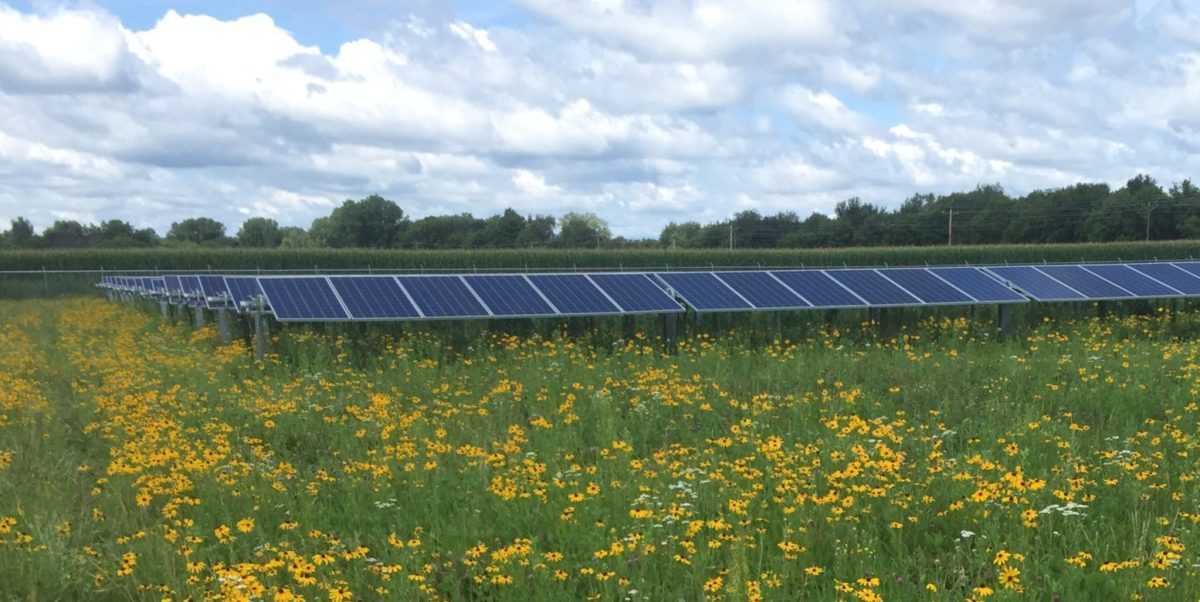Currently, there is a cottage industry worth billions that surrounds the management of tax equity partnerships in the solar power industry. Often, single projects with a size smaller than about 1-2 MWdc or a couple of million dollars get passed over by the tax equity crowd because of the “fixed costs” (lawyer/CPA/etc. fees) associated with putting together deals where a single party can own the project, and other investors can take advantage of the tax benefits. This complexity has led to the unicorn chase of a “tax efficient owner-operator”.

Yesterday, U.S. Representatives Earl Blumenauer (D-OR) and Darin LaHood (R-IL) introduced the Renewable Energy Transferability Act (pdf). The stated purpose of the act is to increase the level of utilization of the Production Tax Credit (PTC) for wind and the Investment Tax Credit (ITC) for solar.
The legislation observes that the credits can be transferred to an “eligible project partner.” The document notes that “with respect to any energy property, these persons are defined as any person who”:
- has an ownership interest in such energy property
- provided equipment for or services in the construction of such energy property
- provides electric transmission or distribution services for such energy property
- purchases electricity from such qualified facility pursuant to a contract
- provides financing for such energy property.
The legislation notes that for group 5 (noted as “paragraph E” in the document), “any amount paid as consideration for a transfer described in paragraph (1) shall not be treated as financing of a qualified facility.” The legislation suggests that later rules for determining which persons are eligible project partners with respect to any energy property might be put forward.
Under current law, in practical terms, in order to get the maximum (99%) of the tax benefit to tax equity partners, you must also allocate 99% of the income, gain, losses and deductions to those tax equity partners. Per Gregory Jenner, partner at Stoel Rives;
What Earl’s bill would do is break that link. It would allow credits to be allocated to partners (by election) even if they were not allocated income, loss, etc. in the same proportions. It also would allow credits to be allocated to persons who were not partners, such as lenders and the offtakers of electricity. In other words, the bill would also permit the owners to “sell” PTCs and ITCs to a limited class of non-owners of the project.
Expect creativity in the application of this legislation. For instance, contractors can offer the tax credit right off the top off the price if they or suppliers can use it. Or, there might be new organizations that arise an pool their resources just like tax equity groups do now.
In the press release on Blumenauer’s website, Tom Kiernan, CEO of the American Wind Energy Association, is quoted as saying, “the Blumenauer and LaHood bill will deploy thousands of additional megawatts of renewable energy projects.”
Federal support for solar power in the 30% range has been around since 2007, when a 30% cash grant was paid, soon after their project completed, to those who installed. Then, the 30% grant was turned into a tax credit. In late 2015, it was extended through its current status of 30% in 2019, 26% in 2020, and then 22% in 2021. In recent times there has been nuance added, with 37 questions asked, Safe Harbor defined by the IRS, and retrofit energy storage getting included.
In the past several months we’ve seen a bill to extend the 30% tax credit to standalone energy storage, as well as a push to make the tax credits permanent as part of any new infrastructure packages.
This content is protected by copyright and may not be reused. If you want to cooperate with us and would like to reuse some of our content, please contact: editors@pv-magazine.com.








I don’t understand all the legal language so I will just ask a simple question after stating our situation.
Last December we had solar panels installed on our roof in Arkansas. We are retired and pretty much live on social security and not in an income bracket that forces us to pay taxes. So we do not owe any tax. However, we now have a $9530.00 credit on our tax return. We will never get the benefit of this credit because we don’t have enough income to pay tax. We have financed $36,000.00 and would like to pay down the loan with this tax credit dollars. No one seems to know if or how we can transfer this tax credit to say our son who always owes taxes and he could help pay down our loan. Is this possible?
Currently, there is no way to transfer this tax credit